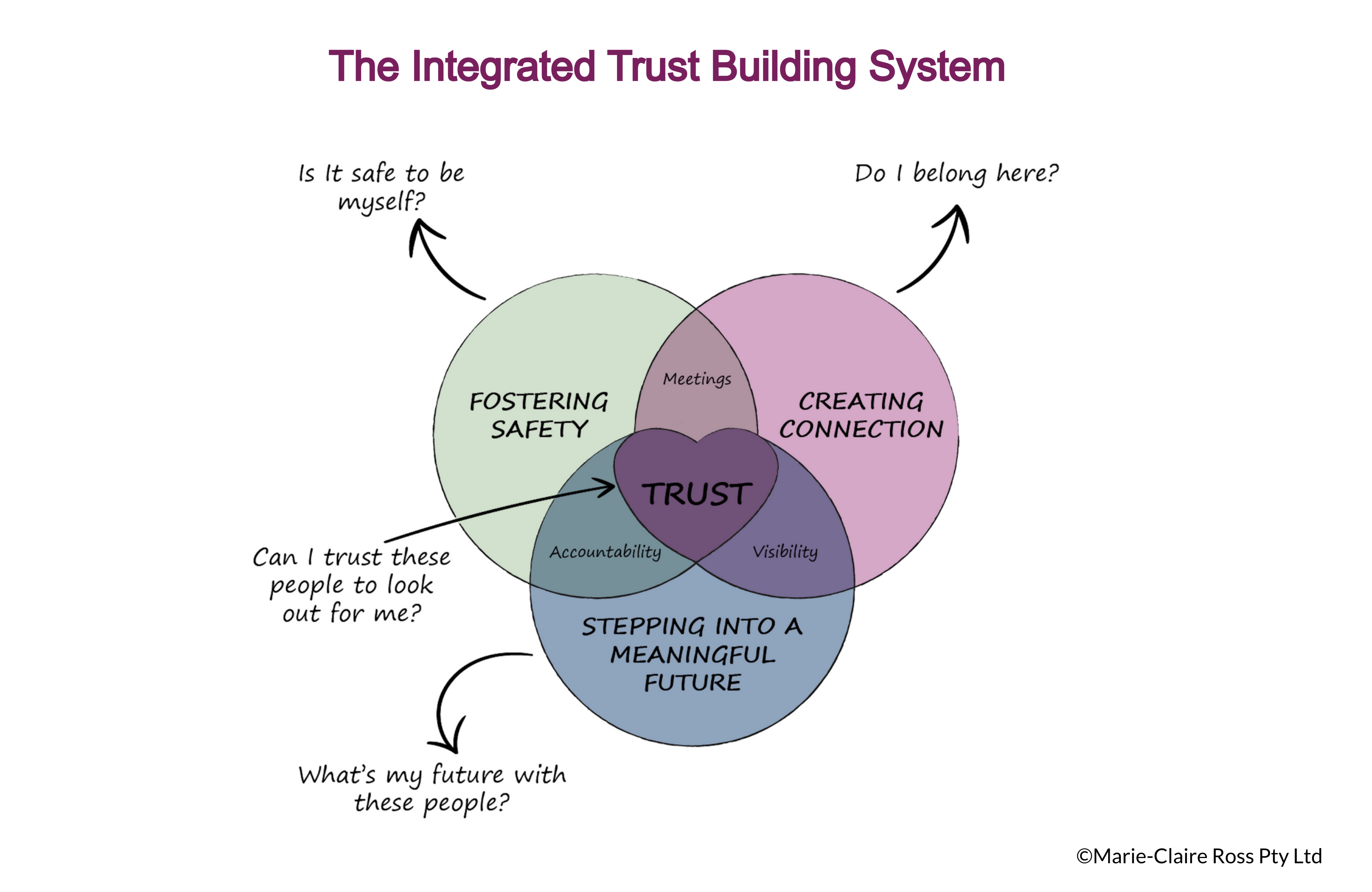
One on ones serve as a powerful tool for fostering stronger, more trusting relationships with each of your team members.
According to a Gartner study, only 24% of hybrid and remote knowledge workers report feeling connected to their organisation’s culture.
Interestingly, while hybrid work doesn't necessarily change workplace culture, it has changed how we experience culture.
One of the definitions of company culture is that it is about how gets work done in an organisation. It’s about the behaviours and habits employees have learnt over time, through modelling their peers.
Before we could sense a company's culture by walking in the front door - how the receptionist greeted you, the values that hung on the walls and by watching how people interacted in the hallways provided a lot of information on company culture.
Working in an office meant you were inculcated into a company culture through the ritual of Friday night drinks, operational rhythms and the stories co-workers told over provided snacks in the tea room. Strong bonds were formed that established culture and helped newcomers see and feel how they were meant to behave.
Now the physical spaces where we could see culture in action are pretty much deserted. Cultural beliefs and norms are still being formed - but they are no longer evolving from leaders implicitly modelling behaviours and routines visible in the workplace.
Instead, employees are picking up cultural cues from watching leaders virtually. But the implicit signals are weaker and harder to read. Not only that, an employee's home environment plays a small part in influencing culture.
Getting a working from home culture right means leaders understand and model a really clear set of behaviours, so it is easy for people to read and feel online. This has to be supported by regular and transparent corporate communication that highlights and rewards the right behaviours.
Over the last few months, I've spoken to a lot of leaders who are worried about how to sustain their great culture when the majority of employees are working from home. The good news is that you can still have a great culture, without a physical office, it just requires leaders changing their expectations of how employees work and removing habits designed for a different time.
Today, it's no longer about when and where work happens, but how people work more effectively together. This requires training managers to support flexible work and considering the impact of people's personal lives on work.
Flexible work requires flexible thinking around work practices
The only thing that has remained constant with hybrid working is the work itself. This still plays a pivotal part in creating culture. Now, it requires leaders who can intentionally identify opportunities for employees to feel connected to the culture through jobs to be done.
As Jason Fried, CEO of Basecamp, that makes project management software said back in 2018 "Remote elevates the work over culture fit, because the work speaks for itself. You can't charm your way past bad work. But there is a risk that people will not like one another because they misread some interaction or just had a bad interaction and never had the chance to go to lunch and get over it. Things can fester a bit - that's a bigger risk. So it's important to see one another as human. Those meet-ups matter."
This means that any type of virtual connection is critical for conveying culture and building connection. Essentially, meetings and one-on-ones are crucial for culture building.
The moments that matter are when leaders bring people together for real dialogue - both virtually and in-person. Culture is not the job of the CEO or HR. It really is the responsibility of everyone with team leaders playing a huge part in connecting people to the culture. Each leader is responsible for creating a thriving and trusted micro team culture that connects people together to the organisation as a whole.
What has become clear is that today we need more human-centric leaders who have the ability to build strong relationships where people feel safe to contribute. Connection has shifted from in-person proximity to emotional proximity.
100.png?width=2835&height=1843&name=The%20Integrated%20Trust%20Building%20System%20(colour)100.png)
Neuroscience research confirms that that there are certain factors that our brains need to trust a situation. These are:
The trick here is to always touch on these three factors in your dealings with others. This helps people breathe more easily knowing they are supported and valued – making it much easier to face difficult challenges.
There are three corresponding interactions where you communicate these three essential practices. These enablers are:
The good news is that these three practices don’t take much time to deliver, it just takes practice and courage. And when you get them right, they provide a powerful shortcut to navigating the complexity of human behaviours and beliefs.
Today, leaders need to reassure people that their emotional needs are being met through signalling that the organisation centres around people, not profit. And that they care about their direct reports – their career pathway, mental health and job satisfaction.
By focusing on making your meetings and one-on-ones better, it shifts a lot of other things.

One on ones serve as a powerful tool for fostering stronger, more trusting relationships with each of your team members.

According to Gallup, employees whose managers hold regular meetings with them are almost three times as likely to be engaged as employees whose managers do not hold...